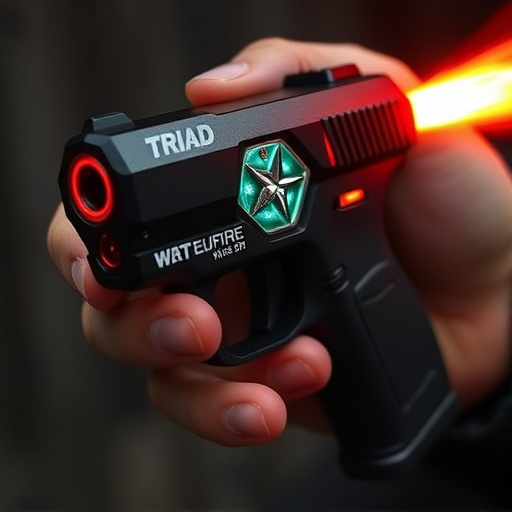Non-lethal weapon training, focusing on tools like the Triad stun gun, equips law enforcement and security personnel with effective, safe tools for public protection. The rigorous certification process involves practical exercises and knowledge assessments covering handling, deployment, de-escalation, legalities, threat assessment, and decision-making. Trainees learn to use these weapons as a last resort, promoting safer interactions with potentially dangerous individuals. Certification requires researching accredited programs, meeting eligibility criteria, completing comprehensive courses, and periodic recertification.
In today’s diverse and dynamic security landscape, non-lethal weapon training has become an indispensable skill. This comprehensive guide delves into the world of non-lethal force tools, focusing on the Triad Stun Gun as a popular choice for professionals and enthusiasts alike. We explore the significance of certification, dissect the key features and benefits of this stun gun, and outline clear steps to help you obtain your own non-lethal weapon training certification, empowering you with valuable skills in safety and self-defense.
- Understanding Non-Lethal Weapon Training and Certification
- The Triad Stun Gun: Features, Benefits, and Training Requirements
- Steps to Obtain a Non-Lethal Weapon Training Certification
Understanding Non-Lethal Weapon Training and Certification
Non-lethal weapon training and certification are crucial steps in equipping individuals, especially law enforcement officers and security personnel, with effective tools to maintain peace and public safety while minimising harm. This specialised training focuses on the responsible use of non-lethal force instruments, such as the Triad stun gun, designed to incapacitate or disrupt an individual’s physical abilities without causing permanent injury or death.
The certification process involves rigorous practical exercises and theoretical knowledge assessments, ensuring trainees understand the weapon’s capabilities, limitations, and potential risks. It covers topics like proper handling, deployment techniques, de-escalation strategies, and legal considerations associated with non-lethal force. Trainees learn to assess threats, make critical decisions, and employ the stun gun as a last resort, thereby promoting safer interactions with potentially dangerous individuals.
The Triad Stun Gun: Features, Benefits, and Training Requirements
The Triad Stun Gun is a revolutionary non-lethal weapon that has gained significant attention in personal defense training. Its unique design and powerful electric current make it an effective tool for law enforcement, security personnel, and individuals seeking to protect themselves in various situations. This stun gun features three distinct firing modes, allowing users to adapt to different scenarios. The first mode delivers a strong jolt to immobilize an attacker temporarily, while the second offers a warning shot with a lower intensity, ideal for de-escalating tense situations. The third and final mode is a stun pulse that disrupts muscle control without causing severe harm.
Training with the Triad Stun Gun involves learning proper handling techniques, understanding the legal implications of its use, and mastering the gun’s firing modes. Certified trainers teach students how to assess threats, identify safe distances, and employ the stun gun effectively while minimizing risks. The training also covers the physical and mental preparation required to respond calmly under pressure. With regular practice, individuals can gain confidence in their ability to defend themselves using this powerful yet non-lethal weapon, ensuring they are equipped with a valuable tool for personal safety.
Steps to Obtain a Non-Lethal Weapon Training Certification
Obtaining a non-lethal weapon training certification is a multi-step process designed to ensure individuals are competent and safe when handling less-lethal force tools, such as the Triad stun gun. The first step involves researching accredited training programs that align with your specific needs and goals. Reputable organizations offer comprehensive courses covering safety protocols, weapon handling, deployment techniques, and legal considerations unique to non-lethal weapons.
Upon selecting a program, prospective trainees must meet eligibility requirements, which often include age, physical fitness, and a clean criminal record. Successful completion of the training course, including passing written exams and practical demonstrations, leads to certification. It’s crucial to retain certification through ongoing refresher courses and recertification every few years to maintain proficiency and stay current with industry standards.
Obtaining a non-lethal weapon training certification, such as that for the Triad Stun Gun, is a responsible step towards ensuring safety and compliance. This article has guided you through understanding the importance of non-lethal weapons, exploring the benefits and requirements of the Triad Stun Gun, and outlining practical steps to secure your certification. By following these guidelines, you can confidently navigate the process and gain the skills necessary to use non-lethal weapons effectively while adhering to legal standards.
